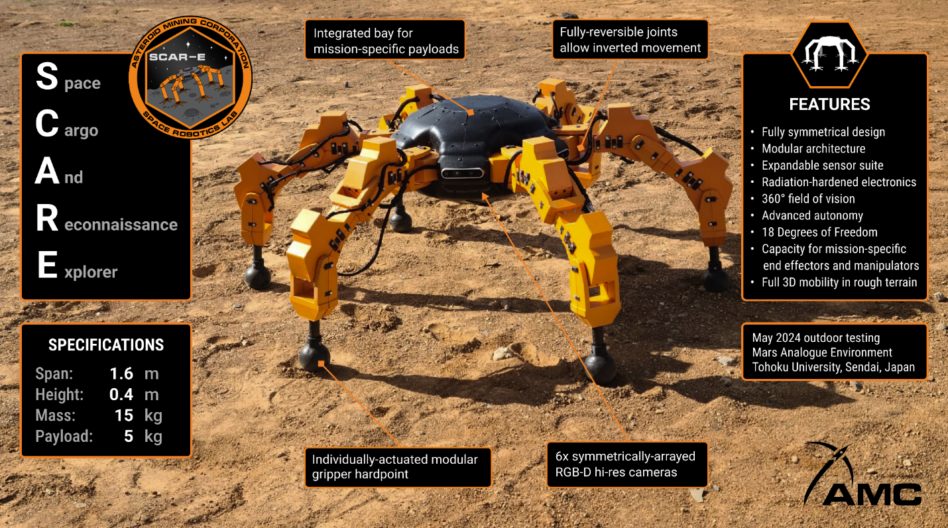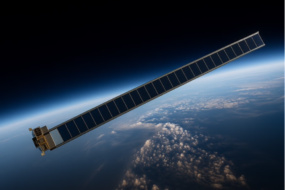Japanese lunar firm ispace has partnered with Asteroid Mining Corporation (AMC), a UK-based space robotics company, to deliver a space robot to the lunar surface, the two companies announced yesterday.
The mission to put AMC’s Space Capable Asteroid Robotic–Explorer (SCAR-E) on the lunar surface is intended to prove out the company’s ability to extract resources in deep-space.
ispace is building its own lunar rovers to traverse the Moon, but it is also committed to building up the industry more broadly to foster a sustained lunar economy.
“As part of our business model, ispace supports pioneering projects by providing lunar transportation services to realize technology demonstrations in short timeframes,” ispace Founder and CEO Takeshi Hakamada said in a statement.
Meet SCAR-E: With spider-like legs, AMC’s robot is built to overcome harsh terrain on the Moon differently from the wheeled rovers of the past.
- Arms: SCAR-E will traverse the lunar surface on six robotic arms, each equipped with gripped end points to maneuver in microgravity and access spaces that are inaccessible to wheeled rovers. The joints are also fully reversible, allowing it to work upside-down.
- Field of view: Using six high resolution cameras placed around the rover, SCAR-E will have a 360º field of view of the Moon’s surface.
- Automation: Due to the lag time associated with operating technology on the Moon and in deep-space, SCAR-E is equipped with software that allows it to operate with little human interaction.
- Customization: SCAR-E’s modular design enables it to carry mission-specific hardware and sensors.
Regular missions: After ispace’s first trip to the Moon in 2023 ended in a crash landing, the company is set on sticking its next attempt.
- Mission 2: ispace’s RESILIENCE lander is expected to fly to the Moon on a Falcon 9 rocket as early as December. This mission will deliver TENACIOUS, a micro-rover developed by the company’s Luxembourg-based subsidiary, as well as four customer payloads, which include a water electrolyzer, a module for food production experiments, and a deep-space radiation probe.
- Mission 3: This is expected to be the APEX 1.0 lunar lander’s first mission in 2026.
- Mission 6: With a planned launch date as early as 2027, ispace has signaled its intention to ramp up the tempo of lunar landings over time.



